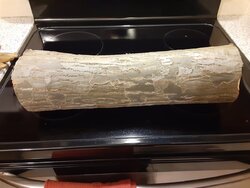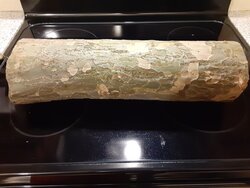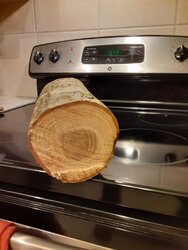I'm not on the site, just this one log was brought to me.
Very heavy in weight.
Professional wood cutter says it is very hard to cut with his chainsaw.
That bark pattern reminds me of what we call cottonwood, white fuzzies like snow each May cover the city air (Sycamore?), but I have never scored one of those trees I wouldn’t think they are this dense/heavy unless it's all water, but as I say I have no prior knowledge scoring a cottonwood.
Was just felled alive today.
Thank you
Very heavy in weight.
Professional wood cutter says it is very hard to cut with his chainsaw.
That bark pattern reminds me of what we call cottonwood, white fuzzies like snow each May cover the city air (Sycamore?), but I have never scored one of those trees I wouldn’t think they are this dense/heavy unless it's all water, but as I say I have no prior knowledge scoring a cottonwood.
Was just felled alive today.
Thank you




